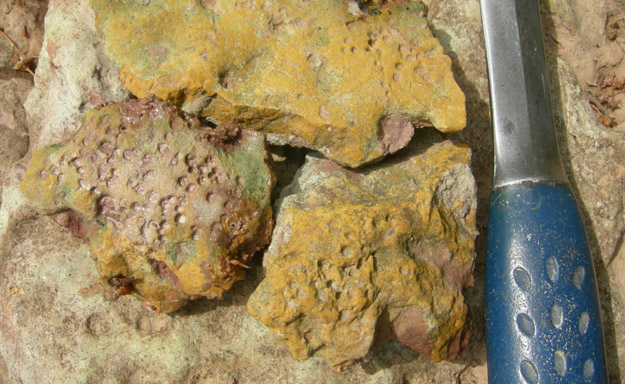SYAS RIVER, LENINGRAD REGION, RUSSIA–The main geological attractions for me on this expedition are the abundant carbonate hardgrounds in the Lower and Middle Ordovician in this part of the world. A carbonate hardground is a cemented seafloor. What were soft sediments on the bottom were cemented with carbonate minerals (calcite in the Ordovician) so that they became a rocky surface several centimeters thick. The sediment is usually carbonate mud and shells, so the result is essentially a limestone seafloor. Many invertebrate animals colonize these hard surfaces by wither encrusting them or boring into them. Those eocrinoids illustrated earlier, for example, often encrusted Early and Middle Ordovician hardgrounds.
Today at the Syas River Carbonate Mound locality (N60.02316°, E32.62471°) we saw numerous hardgrounds bored by a shallow variety of a trace fossil called Trypanites.
These are the most common borings in hardgrounds. This particular type of Trypanites is remarkably shallow — often appearing as pits rather than the usual penetrating cylinder. Another difference between these hardground fossil faunas and those I know best in North America and western Europe.



